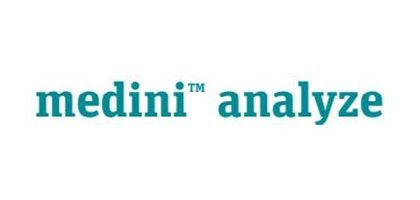Every company encounters problems that need solving, whether they are catastrophic such as; the Chernobyl reactor explosion, the Exxon Valdez oil spill, the Union Carbide cyanide gas leak; or of a more common nature such as; turn-around times are too slow, too many warranty returns, production quality isn’t good enough.
In science and engineering, RCA is a structured long-term solution used to correct or eliminate the cause, and prevent a problem from recurring. It will improve efficiency by addressing the causes rather than the effects, i.e. stop wasting time fire fighting.
It is widely used in IT operations, telecommunications, industrial process control, accident analysis (e.g., in aviation, rail transport, or nuclear plants), medicine and healthcare etc.
RCA generally serves as input to a remediation process whereby corrective actions are taken to prevent the problem from reoccurring. The name of this process varies from one application domain to another.
How Does it Work?
Typical RCA steps:
1. Identify and describe the problem clearly
2. Understand the problem, check the data
3. Take Immediate action with a temporary fix
4. Apply corrective action to mitigate or eliminate the cause
5. Confirm the solution is working
Methods employed are:
- Data / Failure Recording And Corrective Action System (DRACAS / FRACAS)
- To record all events during testing, commissioning/installation and in-service operation
- In order to conduct efficient RCA, good quality data is essential.
- Use Big Data analytics to visualise and identify bad actors, KPIs and trends for early warning
- Choose the most appropriate Problem Resolution method
- Ad-hoc investigation if you don’t have sufficient failures & data to see a pattern using Brainstorming, DoE, Scatter Diagrams, The 5 Whys
- Pareto Chart to show their relative significance
- DMAIC for multiple root causes
- Kepner Tregoe for single root cause
- Fishbone (Ishikawa) Diagram cause and effect, sort causes into categories
- Failure Mode and Effects Analysis (FMEA) to explore potential defects or failures, consequences and causes
Related Projects
Related Resources
Simplify the compliance of safety critical systems to IEC 61508 / 61511
Watch the Webinar Series: Control Systems FuSa Compliance using Medini for HAZOP & LOPA...
On-Demand Webinar: ARM for Defence Standards
Gain a deeper understanding of defence standards & a better way of handling dependability data....
Datasheet: Ansys medini analyze for Semiconductors
Datasheet: Ansys medini analyze for Semiconductors....
White Paper: Analysis and Development of Safety-Critical Embedded Systems: The Need for an Integrated Toolkit
White Paper: Analysis and Development of Safety-Critical Embedded Systems: The Need for an Integrated Toolkit...
White Paper: Chipping Away at Functional Safety Flaws in Automotive Electronics
White Paper: Chipping Away at Functional Safety Flaws in Automotive Electronics...
Reliability Analysis on Flow Control Products
Wilde supported the ARM requirements activity by providing detailed Reliability Analysis...
Integrating Reliability Engineering Tools into Businesses
Integrating Reliability Engineering Tools into Businesses – Some Lessons Learned...
Webinar Recording: What's New in ReliaSoft 2021
Learn about major enhancements and new functionality introduced in ReliaSoft 2021...
Certificate of Reliability and Functional Safety
Wilde's Associate, Technis has awarded a SIL 2 certificate for an ES Series Axial Flow Valve System for Oxford Flow...
Webinar Recording: Implementing the New AIAG-VDA FMEA Handbook using ReliaSoft XFMEA
Learn how ReliaSoft XFMEA software has been updated to fully support the DFMEA & PFMEA approaches according to the new...
RAMS Analysis using ReliaSoft Synthesis
Wilde performed an analysis that assesses the CWS against their client’s Reliability, Availability, Maintainability &...
Hazard Identification using SWIFT (Structured What-IF Technique/checklisT) at a COMAH Lower Tier Site: BAE Systems, Barrow-in-Furness
Wilde chaired a series of SWIFT (Structured What-IF Technique/ checklisT) workshops...
Webinar Recording: What's New in ReliaSoft 2020
Learn about major enhancements and new functionality introduced in ReliaSoft 2020...
Implementing a Safety File to Meet HSE Requirements for SSE at Smurfit-Kappa
Safety Files are important to ensure that both an organisation’s corporate image and compliance with the Health and...
EEMUA Publication 201 Control rooms: a guide to their specification, design, commissioning and operation
Third edition of EEMUA 201, produced in response to changes in technology & good practice across industry....
White Paper: Alarms Management - Priority, Floods, Tears or Gain?
Alarm systems are a major tool allowing process operators to identify escalating abnormal situations and take action to...
Reliability Analysis on Flow Control Products
Wilde supported the ARM requirements activity by providing detailed Reliability Analysis...
EEMUA Publication 191 Alarm Systems - a guide to design, management and procurement
The globally accepted and leading guide to good practice for all aspects of alarm systems....
Human Factors Result in Alarms & Trips Failing to Achieve Expected Risk Reduction
Human factors in the energy & process industries that result in alarms & trips failing to achieve the expected risk...
Reducing Product Development Risk with Reliability Engineering Methods
Reduce risk in a typical product development lifecycle involving both plastic and metallic components....




















